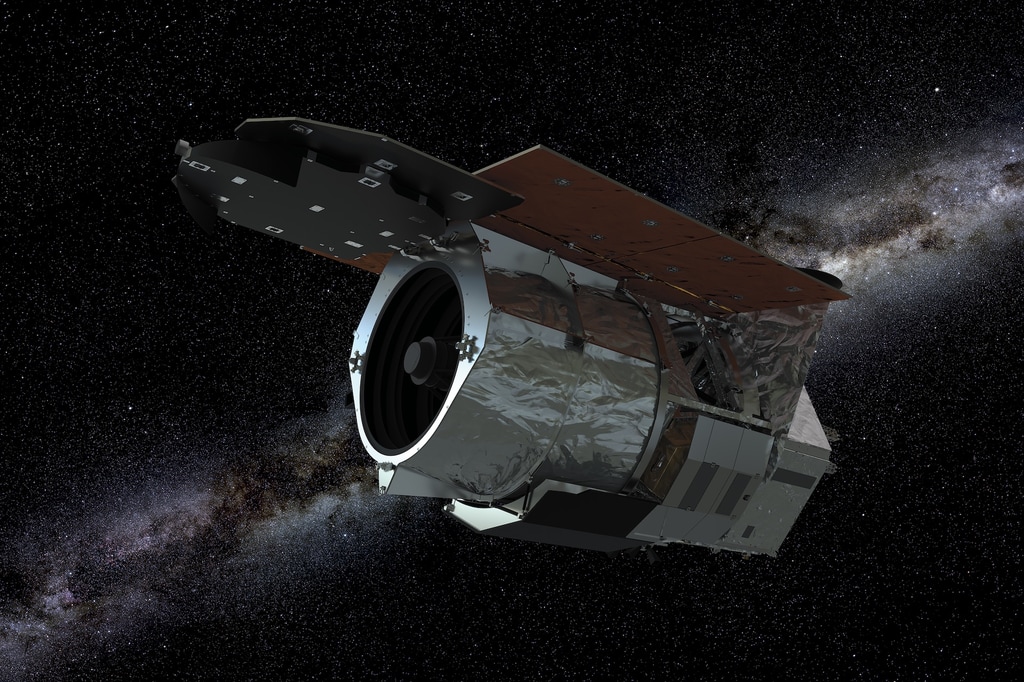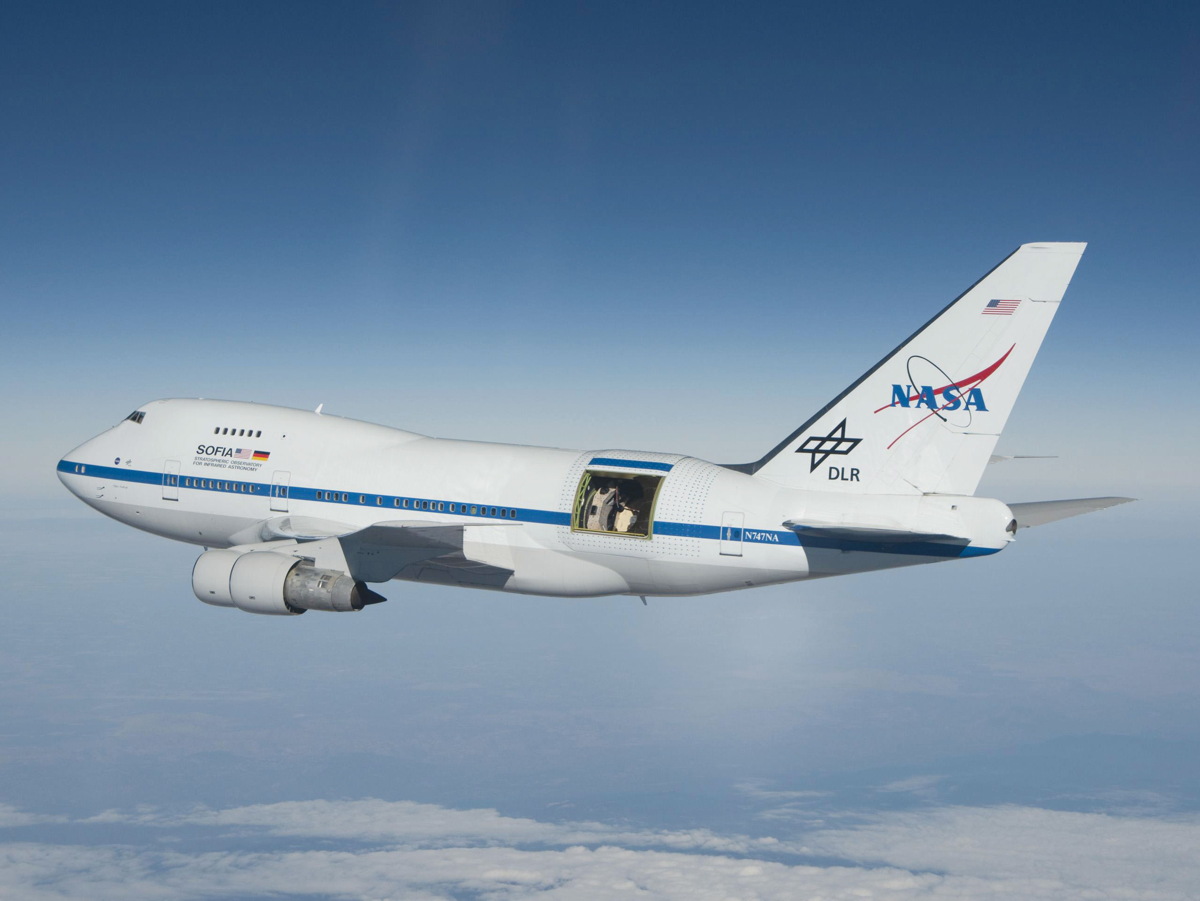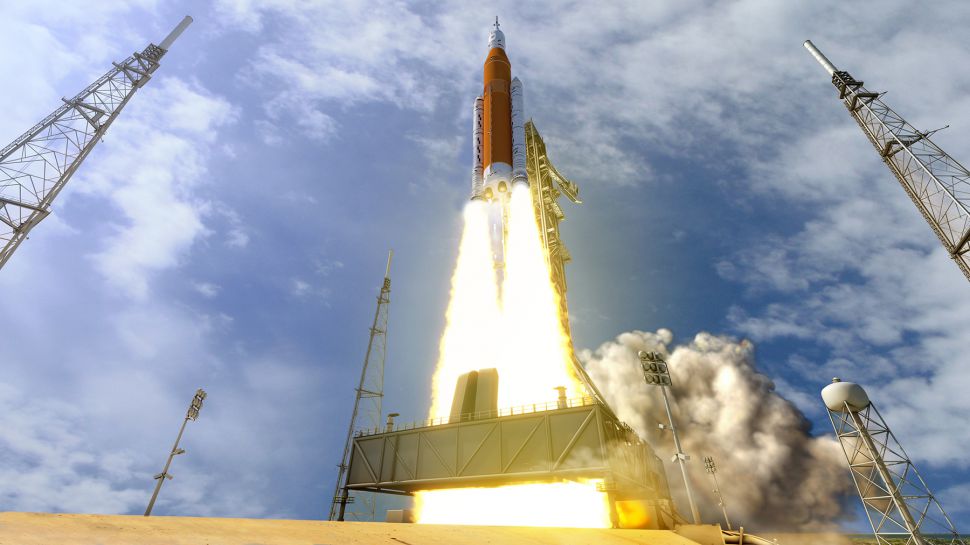Trump's 2021 NASA budget proposal axes 2 telescopes, 2 Earth science missions & STEM grants
Some projects have been on the budget chopping block before.

In the Trump administration's federal budget request for 2021, proposes the cancellation of two NASA telescopes, two Earth science satellites and STEM (science, technology, engineering and mathematics) engagement efforts.
Today (Feb. 10), the White House unveiled its NASA budget proposal for the 2021 fiscal year, which requests $25.2 billion in funding, a 12% increase from the year before.
"We are leading the world into a new and dynamic era of spaceflight," NASA Administrator Jim Bridenstine said in a "State of NASA" presentation to employees. "This is a 21st century budget worthy of 21st century space exploration and one of our strongest budgets in NASA history."
However, despite the funding boost increase, the budget proposal calls for a number of significant programs has been cut or scrapped entirely. The budget request calls for millions of dollars in cuts to the following programs and technologies:
The WFIRST space telescope
NASA proposes the complete termination of the Wide Field Infrared Survey Telescope (WFIRST), an astrophysics mission that has faced previous cuts and been threatened with cancellation. According to the agency, the mission is being canceled because of delays and growing costs with the agency's James Webb Space Telescope (JWST) — a project that continues to face difficulties, delays and climbing budget needs.
JWST is currently set to launch in 2021, Bridenstine said today.
"The Administration is not ready to proceed with another multi-billion-dollar space telescope until Webb has been successfully launched and deployed," NASA said in the request.
Get the Space.com Newsletter
Breaking space news, the latest updates on rocket launches, skywatching events and more!
The agency also cites the cost of WFIRST; its cost was originally slated to come in at under $2 billion, but that has grown to about $3.2 billion to $3.9 billion. "It is not prudent to develop another large space telescope until the Webb telescope, which has grown to $9.7 billion in lifecycle costs, has successfully launched, deployed, and is operational," the agency wrote.
Additionally, "funding both Webb and WFIRST would require redirecting funding from other programs, disrupting the balance of the overall science portfolio," said NASA.
Earth science missions
Two Earth science missions that use Earth-orbiting probes to observe and study our home planet have also been placed on the chopping block. The missions include the ocean-watching PACE satellite (the name's short for Plankton, Aerosol, Cloud, ocean Ecosystem) and the CLARREO (Climate Absolute Radiance and Refractivity Observatory) Pathfinder. PACE provides data on oceans and particles in the atmosphere. CLARREO Pathfinder demonstrates a technique for making more accurate climate measurements, though "there are no plans for a follow-on mission that would use the technique once it is demonstrated," NASA said.
These two missions have been up for termination for two years in a row now, escaping cancellation in both 2019 and 2020. According to NASA, the cost of the programs is not worth the data they would collect.
Despite this cut, NASA's budget "would continue to support a robust Earth-observing program, including one that sustains existing ocean and climate remote-sensing capabilities," the agency said about the proposed cuts.
A flying telescope

With the 2021 budget request, NASA is also proposing to terminate a flying telescope, the SOFIA flying telescope (the Stratospheric Observatory for Infrared Astronomy) airborne observatory. The SOFIA mission, which NASA has previously tried to terminate, flies a large telescope on a 747 aircraft.
"The science productivity for this telescope falls short of that expected for a large mission with annual operating costs exceeding $80 million," NASA wrote in explanation of the cancellation. "SOFIA's annual operations budget of more than $80 million is the second most expensive in the National Aeronautics and Space Administration (NASA) Astrophysics program, yet the mission has not delivered high quality data products or science on par with other large science missions."
Future projections of the mission's progress don't demonstrate that it will become that much more productive as high costs (the cost to fly the plane, including expensive jet fuel) continue, NASA explained.
The agency added, "the James Webb Space Telescope, planned to launch in 2021, will provide data that partially mitigates the absence of SOFIA."
STEM engagement
This budget request also proposes the termination of the agency's Office of STEM Engagement, an approximately $120 million cut in total.
According to the request, these cuts will "prioritize NASA funding toward supporting an innovative and sustainable program of exploration with commercial and international partners."
NASA's Office of STEM Engagement "provides grants to colleges and universities as well as informal education institutions such as museums and science centers." In the request, NASA proposes that these funds be redirected "to NASA's core mission of exploration."
The agency claims that the "discontinuation of NASA's education grant programs is unlikely to have a significant impact on overall research and STEM capacity building that would continue to be supported through other means." NASA points to other STEM activities — such as internships and robotics competitions — as education efforts that will continue on at the agency and which are "more closely linked to NASA's mission."
NASA's megarocket upgrade
The Trump administration's budget proposal also eliminates funding for an upgrade to NASA's new Space Launch System megarocket to maximize the amount of payload the rocket will be able to launch for future deep-space missions.
The budget request fully funds NASA's initial version of the Space Launch System, called the Block 1, as well as its deep-space crew capsule, called Orion. However, it cuts $300 million in funding in order to develop the Block 1B, a more powerful version of the rocket slated to launch heavier payloads like habitats and landers to the moon.

"The Administration proposes deferring funding for the Block 1B upgrade, and instead focuses the program on completion of the initial version of the SLS and supporting a reliable SLS and Orion annual flight cadence," White House officials wrote in a cost reduction statement. "Other elements of the Artemis program, including the Lunar Gateway and lunar landers, will be launched on competitively-procured commercial launch vehicles, complementing the crew transportation flights on the SLS. This approach will speed up the timeline for lunar surface exploration and increase the sustainability of the program."
The Trump administration's 2021 NASA budget request still has to be reviewed by Congress before it becomes law. Those reviews by House and Senate lawmakers are expected to begin later this year.
- NASA's Artemis moon program just photobombed a spacewalk (photo)
- The Orion spacecraft for NASA's 2020 trip around the moon is ready to go
- Will Apollo nostalgia help NASA get its Artemis moon money?
Follow Chelsea Gohd on Twitter @chelsea_gohd. Follow us on Twitter @Spacedotcom and on Facebook.

Join our Space Forums to keep talking space on the latest missions, night sky and more! And if you have a news tip, correction or comment, let us know at: community@space.com.

Chelsea “Foxanne” Gohd joined Space.com in 2018 and is now a Senior Writer, writing about everything from climate change to planetary science and human spaceflight in both articles and on-camera in videos. With a degree in Public Health and biological sciences, Chelsea has written and worked for institutions including the American Museum of Natural History, Scientific American, Discover Magazine Blog, Astronomy Magazine and Live Science. When not writing, editing or filming something space-y, Chelsea "Foxanne" Gohd is writing music and performing as Foxanne, even launching a song to space in 2021 with Inspiration4. You can follow her on Twitter @chelsea_gohd and @foxannemusic.









